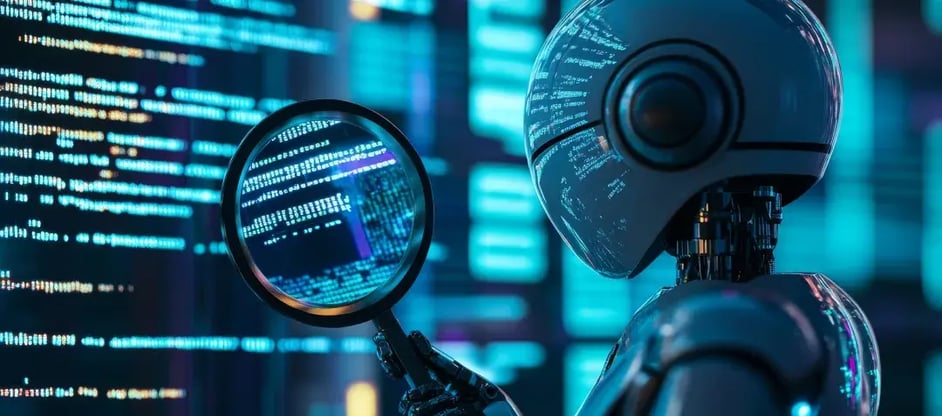What CISOs need to know about Generative AI

Consider this; a well-meaning employee at a major financial firm used an AI-powered chatbot to help draft an internal report. The AI delivers impressive results—until someone realizes sensitive company data was fed into the chatbot. Even worse, the AI retained that data, opening the door to a massive security risk.
Sounds like a cautionary tale? For now, maybe. But as companies race to adopt Generative AI without fully grasping the risks, scenarios like this aren’t just possible—they’re inevitable. In fact, they might already be happening.
Generative AI is everywhere, revolutionizing the way businesses operate. But while it offers incredible opportunities, it also brings a whole new set of security challenges.
As a Chief Information Security Officer (CISO), you’re already dealing with cyber threats, compliance pressures, and ever-evolving attack strategies. Now, there’s one more thing on your plate—figuring out how to manage the risks of Generative AI without stifling its potential.
So, where do you start? Let’s break it down.
It’s not just a trend, Gen AI is here to stay
An X user recently set out to build a SaaS app using Cursor, raving about how AI wasn’t just an assistant—it was a builder. But just days later, things took a turn. He discovered someone was actively probing his app for security vulnerabilities. The next day? He was under full-blown attack.
The real kicker? Fixing the issue was a major struggle because he lacked the technical expertise to patch the flaws quickly. What started as an AI-powered success story quickly became a harsh lesson in security risks.
While you want AI to work for you and show you the best possible performance, the stakes are high when it comes to security and intrusion. While you can dismiss emerging tech like a wearable as just another passing fad, but Generative AI is different.
Companies are integrating AI-powered tools for content creation, code generation, customer service automation, and even security operations. From ChatGPT to Microsoft’s Copilot, these tools are reshaping workflows and productivity.
For CISOs, this means AI governance can’t be an afterthought. You need to stay ahead with your blueprint of governance model – where and how your organization is using (or plans to use) Generative AI.
When AI gets it wrong?
Generative AI is changing the way we work and deliver results (at least for some areas), but it comes with a deep ditch—it can ‘hallucinate’ information, producing incorrect, misleading, or even harmful content. If employees blindly trust AI-generated reports or code, they could unknowingly introduce security vulnerabilities or spread misinformation.
How can you make your way through these trenches?
- Implement strict review processes for AI-generated content
- Train employees to fact-check and validate AI outputs before use
- Invest in AI literacy programs to ensure responsible and secure usage
AI can be a valuable tool—but caution is critical.
Gen AI isn’t just helping businesses—it’s empowering attackers, too
Cybercriminals are already tapping into AI to level up their attacks. From crafting ultra-convincing phishing emails to automating social engineering scams, fraudsters are using the same AI-powered tools that companies rely on for productivity.
How to not fall into the trap?
- Strengthen phishing detection with advanced security measures
- Leverage AI-driven tools to spot anomalies in network behavior
- Educate employees on identifying AI-generated scams and fraud
It is a double-edged sword—make sure it’s working for you, not against you.
Is Cybersecurity the way out?
At the Gartner Security and Risk Management Summit, Gartner’s Deepti Gopal and Dennis Xu tackled a key question: how CISOs can lead the adoption and impact of AI in their organization? This year the keynote focussed on hype - the hype cycle and AI in particular. While the hype cycle showcases the phases of adoption and understanding of the emerging technologies, the analysts said ‘cybersecurity risk is the main factor holding back organizations from adopting AI and other cutting-edge technologies.’
Deepti Gopal, Director Analyst, Gartner, stated, "Cybersecurity should act as an enabler, reducing business friction while focusing on the organization's mission. It's critical to articulate challenges clearly and transition from merely protective measures to a resilience-focused approach that encompasses responding and recovering from threats."
Moreover, AI governance and compliance is the protein pill that cannot be skipped. Laws and regulations around AI usage are still evolving, but governments and regulatory bodies are paying close attention. Frameworks like the EU AI Act and the U.S. Executive Order on AI are setting the stage for compliance requirements.
As a CISO, staying informed about these developments is crucial to ensuring your organization remains compliant.
At Covasant, we help organizations build a rock-solid AI framework to keep business-critical data safe from cyber threats and help them achieve their digital transformation goals. Let’s work together to stay ahead of attackers and keep your AI-powered future secure.


